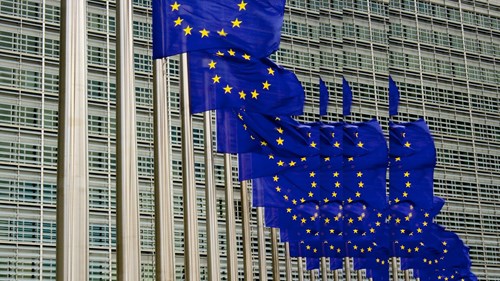NRW launches competition for CCU model regions
At the end of August 2024, the state government of North Rhine-Westphalia (NRW) announced a competition to fund “CCU model regions in NRW”. At around the same time, the Federal Ministry for Economics Affairs and Climate Action (Bundesministerium für Wirtschaft und Klimaschutz, BMWK) introduced a new policy called the Federal Funding Policy for Industry and Climate Action. This policy supports investments in technologies that either capture or use CO2 emissions, particularly in sectors where CO2 emissions are difficult to avoid. Previously, the Federal Ministry had already outlined the key points of a carbon management strategy at the federal level.
The new funding programme of the NRW state government naturally adopts a more localised approach, explicitly focussing on carbon capture and utilisation (“CCU”), which involves using CO2 in industrial products. This initiative represents the implementation of a further measure from the NRW carbon management strategy developed several years ago. This article outlines the main elements of this strategy and provides an overview of the key aspects of the new funding competition.
I. The NRW carbon management strategy
Back in 2021, the then state government adopted its own carbon management strategy for North Rhine-Westphalia. The aim was to transform the region into Europe’s most modern and climate-friendly industrial hub by establishing a closed carbon cycle. The strategy identified several key guidelines:
- The main approach is to decarbonise industry by designing production processes to be carbon-free. The focus is on process energy required for production, which should be sourced in a way that is as carbon-free as possible.
- Where decarbonisation is not feasible, alternative carbon sources should replace fossil fuels. In the interests of a circular economy, the focus should be on utilising secondary raw materials, necessitating efficient recycling systems.
- To choose the most efficient path (decarbonisation or use of alternative carbon sources), the CO2 balance of each stage in the value chain should be considered. CO2 emissions generated during the use of a product should be assessed as significantly less advantageous compared to those generated during production because capturing CO2 at production sites (point sources) is more efficient.
- When implementing CCU, the origin and destination of the CO2 used are crucial, meaning that the carbon footprint of this technology cannot be universally described as positive. It is much more important to bind CO2 as permanently as possible, which should ideally not come from the utilisation of fossil carbons, but rather from green sources. A holistic view of the CO2 balance is therefore necessary here as well.
- For the capture and storage of CO2 that cannot be otherwise reduced, a CO2 infrastructure is required to enable both the utilisation and storage of CO2 (Carbon Capture and Storage, CCS).
- The availability of CO2 capture at point sources should not lead to a slowdown in decarbonisation efforts, a phenomenon known as the lock-in effect. This concern is particularly relevant for energy generation, which should transition to renewable energy sources and not be connected to a CO2 pipeline network.
The NRW carbon management strategy sets out four areas of action to drive the transformation towards a climate-neutral and competitive low carbon industrial sector:
First, the carbon intensity of NRW’s industrial sector is to be reduced by decarbonising where feasible, accelerating the development of a hydrogen economy, and expanding wind and solar energy as well as energy infrastructure.
In the second area of action, sustainable carbon utilisation is to be achieved in North Rhine-Westphalia by optimising the use of biomass, expanding the base of secondary raw materials and developing CCU technologies.
Third, a CO2 management system is to be established, which includes planning a CO2 transport network and developing suitable options for CO2 capture, utilisation and storage.
The fourth area of action relates to fostering a societal dialogue that engages all sectors of society in North Rhine-Westphalia to ensure broad acceptance of the desired transformation.
II. Funding competition for CCU model regions in NRW
With this funding competition, the state government is implementing an initiative from the third action area of the NRW carbon management strategy, acknowledging that not all CO2 emissions can be eliminated across all industrial sectors. The goal is therefore to support projects that use CO2 from industrial, biogenic or atmospheric sources as raw materials in production.
1. Objectives and orientation
The state government hopes that the competition will boost innovation in the use of CCU technology. However, during the presentation of the funding, the responsible Minister for Economic Affairs and Climate Action, Ms Neubaur, emphasised that the primary goal remains the avoidance of CO2 emissions. A total of €6 million is available from state funds to support up to three projects.
The state government seeks to promote different paths to sustainable carbon utilisation:
- On the one hand, the focus is on the short-term binding of CO2 in chemical industry products provided that the CO2 is sourced from atmospheric or biogenic origins.
- On the other hand, the goal is to bind CO2 in long-lasting products, with the funding competition aiming for a binding period of at least 35 years.
The NRW state government is thus intentionally adopting a broad approach and is also open to supporting projects that may not have already achieved fully climate-neutral CO2 utilisation pathways, but are actively working towards this goal and can present the necessary steps and clear timelines.
Furthermore, the competition aims to promote the development of an entire process chain, meaning that CCU process modules that can be deployed in a highly modular way are likely to have strong chances of receiving funding. The projects should also be based on long-term carbon sources, i.e. unavoidable CO2 generation, CO2 from sustainable biomass or atmospheric CO2.
2. Preconditions for participation
The competition is open to project consortia from North Rhine-Westphalia, consisting of at least two companies, with at least one company utilising the CO2. The programme is aimed at business of all sizes, universities, research institutions, clubs and associations, municipalities, municipal associations as well as individuals who qualify as entrepreneurs.
The following requirements must be met for a successful application:
- More than 50% of the eligible expenditure must be incurred and utilised in North Rhine-Westphalia.
- Except for basic preliminary planning, the project must not have commenced prior to the application.
- There must be clear potential for future realisation and commercial success, with overall financing securely in place.
- The project may be featured as part of the state’s press and public relations work.
- The project duration is generally limited to a maximum of 36 months, during which it should be explained how the project will be financed and sustained after the funding period ends.
3. Evaluation criteria and funding amounts
The state government has established the following criteria for evaluating applications:
- Objective and conceptual approach (20%),
- Involvement in planning of companies and other partners (20%),
- Innovative nature of the planned project (20%),
- Contribution to a circular carbon economy (30%) and
- Contribution to regional discourse (10%).
While projects led by universities and non-commercial research institutions are fully eligible for funding, companies may receive between 25% and 80% funding, depending on their size and the specific content of the project.
4. Recommendations for interested companies
Project outlines may be submitted to the Ministry of Economic Affairs, Industry, Climate Action and Energy of the state of North Rhine-Westphalia until 31 January 2025. The successful applications will be announced in March or April 2025, with project approvals expected in autumn 2025, following the submission of all necessary documentation.
Given the broad target audience for this funding competition and the limited time frame, interested companies should prepare their applications carefully, in particular with the help of legal experts.
Well
informed
Subscribe to our newsletter now to stay up to date on the latest developments.
Subscribe now









